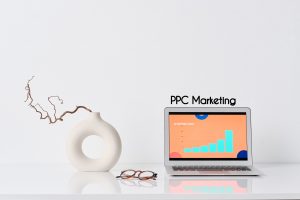
What is the best CPA definition? Cost per acquisition (CPA) is a marketing metric that quantifies the cost of acquiring one customer. CPA can be used to compare the performance of different marketing campaigns and to measure an individual campaign’s effectiveness.
Unlike other marketing metrics like Cost Per Impression (CPM), Cost Per Conversion (CPC), or even CAC (Customer Acquisition Cost), CPA is better in two regards. First, it is granular, meaning it can be associated with only the cost of specific acquisition channels rather than the average cost of acquiring customers across every platform. So, while CAC and CPA can give you the total campaign cost per conversion, only CPA can be streamlined to a single channel.
Second, unlike CPC, it covers the cost of the whole journey from contact to customer. This means it also includes any additional costs associated with the acquisition process, such as unsuccessful attempts to attract new customers and any refunds made to dissatisfied customers.
Why Is Cost Per Acquisition Important?
While business owners and marketers understand the value of effective advertisements in reaching their target audience, most focus on increasing conversion rates. If this characterises your main marketing strategy, there could be a potential problem as these marketing metrics don’t capture the cost of getting a new customer.
CPA is important because it allows you to evaluate your marketing efforts by looking at how much money you spend per customer acquired. It is also the direct financial link between your revenue and marketing and can inform effective lead generation. Without a good CPA, you could waste your time, effort, and money.
Where Can You Use Cost Per Acquisition
The CPA metric can be used across multiple paid marketing mediums, sometimes including platforms that don’t have a specific advertising cost. Typically, CPA is used in the following ways:
1. PPC

Pay Per Click (PPC) is the most common form of search engine optimization advertising marketers use on platforms like Google Ads to reach their target audience. To calculate your PPC’s CPA cost, you’ll need to know your spending on PPC and your average click-through rate. You should aim for high ad click-through rates with the least cost incurred
2. Affiliate
Affiliate marketing is a great way to get exposure for your business without spending a lot of money on advertising. Although it’s a lesser-known marketing strategy, affiliate marketing allows you to promote your business on other platforms that can reach your target audience. Affiliate marketing is synonymous with influencer marketing because it involves influencers who will expand the reach of your business beyond your target website, often using social media platforms.
3. Display
Display advertisements are a great way to reach a niche audience. They’re affordable compared to other types of advertising and allow you to target your audience in a completely customised way. If you have an online store, display ads are ideal for targeting people who have visited your website but haven’t made a purchase yet.
4. Social Media

Social media marketing is an excellent way to market your business on social media platforms like Facebook, Instagram, and Twitter. You can use social media CPA marketing to reach new customers looking for products or services similar to your offer. While this marketing strategy is used for low-budget cost per acquisition campaigns, it can quickly turn expensive due to the rising cost of Internet access and the quality of the campaign ads used on these platforms.
5. Content Marketing

Content marketing is a way to acquire new customers and keep existing ones. It can be used for any business, but the most common applications are for B2C and B2B companies and usually involve blogs, articles, and periodic newsletters. Content marketing may not necessarily increase customer conversion, but it is often pivotal to customer loyalty and makes for a stable CPA.
How to Calculate Cost Per Acquisition:
The generic CPA formula is: total cost of acquisition channels/conversions (number of acquired customers). If you decide to streamline calculations to specific marketing channels, then the different CPA formulae will reflect the unique channel you are targeting.
However, to effectively calculate the accurate CPA of your business, you will need the AOV (Average Order Value) and the Customer Lifetime Value (CLV). A low CPA doesn’t mean your marketing is cost-effective, especially when your customers have a low CLV.
A low CPA with a low CLV means your marketing strategy is only effective in the short term because customers are not committing to you and your company. In the long term, this could raise the overall marketing cost and your CPA.
-
Pros
There are a few benefits to using Cost Per Acquisition (CPA) as a marketing strategy. First, it makes for cost-effective marketing since it tells you how much it costs to acquire a new customer.
Second, CPA helps you understand your return on investment (ROI). It functions as a marketing KPI, which can indicate which marketing tactics are effective and working well for your company and which ones are underperforming.
Third, CPA is good practice for future campaigns because it helps you get used to tracking data and analysing metrics over time and can productively inform future marketing strategies.
-
Cons
CPA by itself may not accurately reflect where your marketing metrics stand. It can be misleading if it is not combined with other marketing variables like the LTV (LifeTime Value), Website Conversion Rates, and marketing ROI. This is because CPA is a granular marketing metric that does not reflect the total picture of your marketing campaign.
What Is a Quality Cost Per Acquisition?
A quality CPA is hard to pin down because, across businesses, CPA will be done on differing benchmarks. Each business will have its marketing margin, prices, products, and cost of operations. They will also be at different business stages, have different budgets, and source their campaigns differently.
So when it comes to a quality CPA, the primary thing will be to sufficiently understand your acquisition platforms and how much they cost you to acquire new customers. Small-scale tests are effective in understanding how to gauge the market and are indicators of what will be an effective marketing strategy for your business.
Conclusion
As a business owner, your cost per acquisition, a ratio of the cost of your customer acquisition channels to the number of customer conversions, is a non-negotiable marketing metric. Understanding your CPA channels and how they compare with your competitors can help you increase your marketing efficiency while cutting down on costs.
